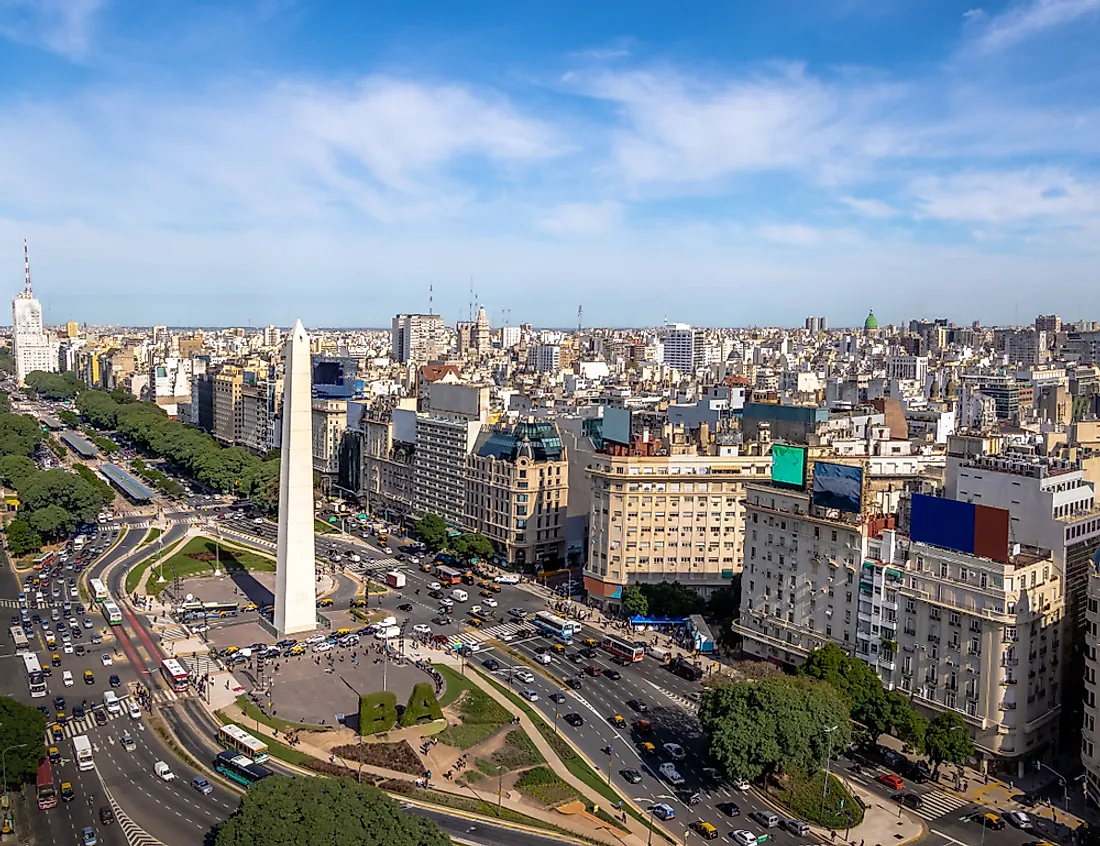What Is The Capital of Argentina?

The capital of Argentina is Buenos Aires, which is located along the southeastern shore of South America, along the Rio de la Plata. This city has a population size of 3.89 million and a metropolitan population of around 17 million, making it the largest city in the country and fourth-largest city in the western hemisphere.
This city is known for its high quality of life. For example, residents of Buenos Aires have one of the highest household income levels in South America. Additionally, this capital city is is popular with tourists, who come to take in the multicultural scene and European-influenced architecture.
History of the Capital of Argentina
Present-day Buenos Aires was inhabited by indigenous peoples until Spanish explorers founded the city in 1536. The native inhabitants defended their homes and forced the European settlers out of the region by 1542. Nearly 40 years later, Spanish colonizers returned and established a trading post. Traders of the time, however, were penalized by the complexity of the approved trading routes (which benefitted Lima, Peru) and by the later part of the 19th century, began to promote the idea of independence from the Spanish crown.
In 1810, Buenos Aires led present-day Argentina to the Argentine War of Independence, gaining freedom six years later. Buenos Aires later managed to fight off attempted French invasions during the mid-19th century. The population of the city began to grow in the early 20th century, with rural to urban migration as individuals came to Buenos Aires looking for employment opportunities in its successful industrial sector. This capital city has remained an important economic, political, and cultural center for Argentina.
Demographics of Buenos Aires
The current population of the city proper is relatively unchanged since the middle of the 20th century when rural to urban migration slowed. This limited growth has been attributed to low immigration numbers and a lower than average birth rate in the city. This pattern has not been seen in the greater metropolitan area, however, which has experienced rapid population growth.
The population of Buenos Aires has a similar age structure to most of the urban areas throughout Europe. Nearly one-quarter of the people in this city are over the age of 60, while only 17% are under the age of 15. Additionally, the vast majority of residents here live in apartment buildings rather than traditional houses.
Roughly 25% of the workforce is employed by the services sector. This is followed by 20% in the tourism and commerce sectors, 17% in the financial services and business sectors, 10% in the manufacturing sector, and 6% in public administration. The city reported an 8.7% poverty rate in 2007, while the metropolitan area reported a poverty rate of 20.6%.
In terms of ethnicity, most residents of Buenos Aires are of European descent. Some of the most commonly cited countries of origin include Italy, Spain, Germany, Scotland, Sweden, Greece, and Portugal. Additionally, the city is home to the largest Jewish population in South America, with a size of 250,000 people. Chinese immigrants make up the fourth-largest immigrant group, many of whom came from Taiwan during the 1980s. Approximately 61,876 individuals are of indigenous descent. Of these, the Quechua and Guaraní peoples make up the largest percentage, at 15.9% each.











